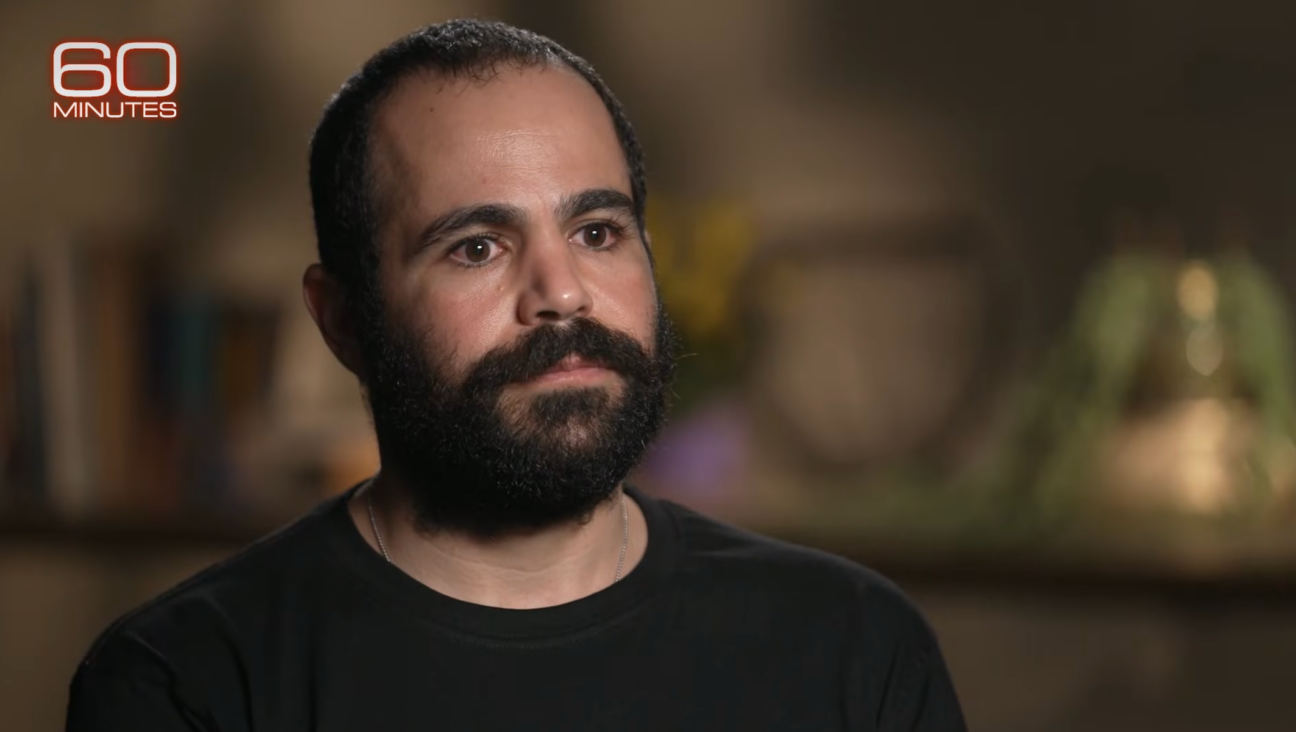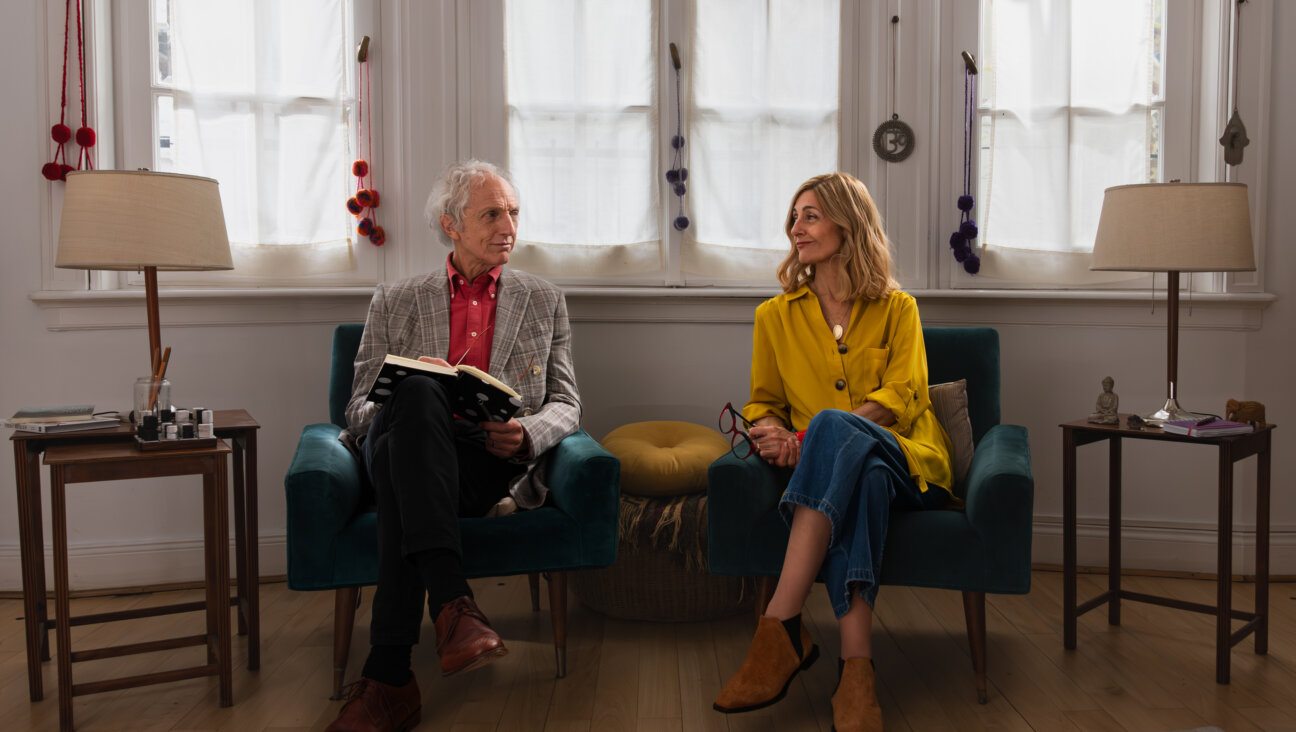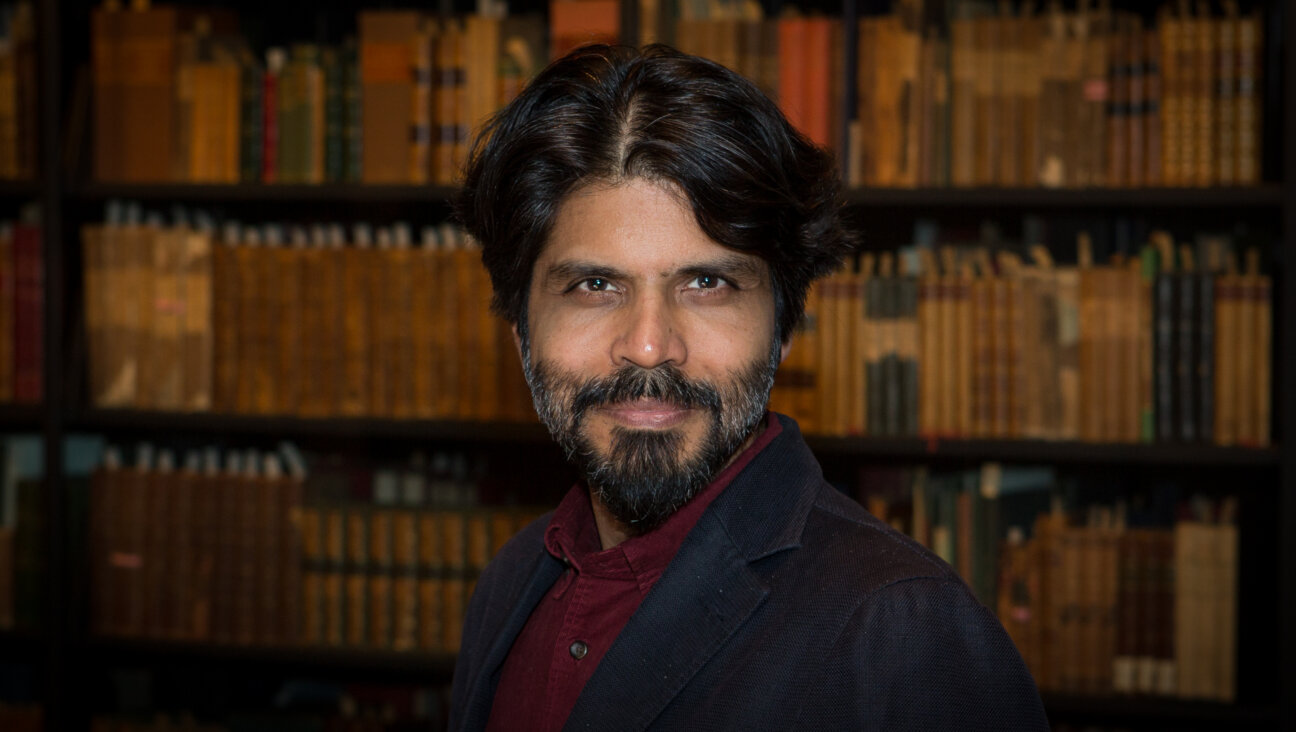The Plot Thickens, With Female Rabbis Stirring the Pot
The rabbi. In popular culture, he has been everywhere — on the page, of course, but also on the small and big screens. He has been a moral center, a family supporter, a shyster, a pontificator (naturally); he has been an ancillary character and a main one; he has been a villain and a hero. And he always has been a he.
Until very recently, that is.
Women were first ordained in 1972 by the Reform movement, followed in 1985 by the Conservative movement, and art has imitated life: Latecomers to the rabbinate, women rabbis have been scarce in books, television and film. But recent credits show that not only are women rabbis sneaking into pop culture, but they also have launched an unabashed assault. For example, as anyone who has tuned into prime-time television in recent months can attest, Michelle Missaghieh, rabbi of Temple Israel in Hollywood, Calif., is single-handedly ratcheting up the female rabbi quotient on television by inspiring storylines first on HBO’s “Six Feet Under,” and more recently on ABC’s hit medical drama, “Grey’s Anatomy.” And in the past year, three very different authors — inadvertently or not — have addressed the nature of female spirituality and rabbinic authority by focusing their plots around female rabbi protagonists: Amy Sohn, best known for her sex column in New York magazine; Jonathan Rosen, founder and longtime editor of the Forward’s arts and culture section, and one of the most thoughtful voices of contemporary Jewish culture, and Julius Lester, a children’s book author and African American convert to Judaism.
By holding up women as rabbinic models, these three novels test the very nature of female rabbis. They gauge their intellectual and spiritual depth and test for the authority necessary for the rabbinate. While male rabbis are rarely measured for such qualifying characteristics, women don’t get off so easy (just as in real life, some might add). When they replace men as religious authorities onscreen and in literature, women’s roles are evaluated more critically; in fact, their credentials are parsed with a fine-toothed comb. And this very well may not be a bad thing.
In “My Old Man,” Sohn’s Rachel Block is a 26-year-old rabbinical school dropout turned bartender whose life these days revolves around her affair with a much-older playwright and her father’s affair with her slutty neighbor. Rosen’s “Joy Comes in the Morning” introduces us to Deborah Green, a pulpit rabbi who meets patient Henry Friedman during rounds at a hospital and then falls in love with Friedman’s son, Lev. Lester’s Rebecca Nachman, in “The Autobiography of God,” becomes a counselor at a small college in Vermont after leaving her pulpit position in New Jersey. She is preoccupied professionally with a student’s death, and personally with the mysterious arrival of a Holocaust-era Torah scroll and its mysterious, ghostly owners.
At the crux of each novel, though, is a tension that emerges around protagonists who are decidedly intellectual and spiritual and at the same time unambiguously feminine. Certainly, none makes any attempt to hide her feminine side, publicly or in private. Rosen’s Deborah walks around in T-shirts and nothing else, smokes cigarettes outside her window in the middle of the night and has premarital sex with a fiancé infatuated with her hair, her skin, her breasts. Sohn’s Rachel is, predictably, hot and fun. Even Lester’s Rebecca, left with a limp after a childhood accident, is said to dress “more like a mannequin in Bergdorf’s window than a rabbi.”
But Rebecca internalizes her love affair with clothing in the service of God and Jewish ritual: “She took the time to take what God had given her and transform it into a vessel of beauty. Was that any different than taking wheat and transforming it into flour and the flour into challah braided like the hair of the Sabbath Queen?” Similarly, in Rosen’s work, the way men and some women idolize Deborah’s singing voice as she recites Psalms, or her rapturous — even sexual — expression when praying, draws attention to her spirituality and her womanliness. Indeed, the cloak of femininity that shapes these ladies’ religious expression reveals the rich struggle between rabbinic and feminine identities embodied by the fictional women rabbis.
But as one might note, the women in these books seem to be “failing,” or at least fighting to retain their spiritual status and rabbinical stature. Sohn’s Block is a rabbinical school dropout, while Rosen’s Green suffers a crisis of faith and ultimately loses her pulpit position after her congregants learn she is living with her boyfriend and then fiancé, Lev. Though Lester’s Nachman finds refuge in Vermont after her congregation dwindles, she continues her life-long struggle to juxtapose spirituality with ritual, femininity and beauty with tradition. And it is she who wonders: “Was it because she was a woman? Pandora had opened the box; Eve had eaten the fruit of the tree; and though both myths concluded that the world would be a paradise if these women had minded their business, stasis was not the ideal condition. Maybe women preferred the truth, regardless of the consequences.”
In fact, the women do offer spiritual guidance that seems different from that offered by their male counterparts, a trait bordering on maternal nurturing but without ever yielding intellectual authority. Rebecca’s maternal compassion is strong enough that by the novel’s last page, she encounters God at Auschwitz and comforts him as he lays his head in her lap and cries. Stripped down to its basest level, it is an expression of feminine guidance that isn’t altogether different from that of God — who is looked to in times of crisis and who may criticize, but always does so with love.
So, though the women in these novels may fail to retain their pulpits, they succeed as authoritative spiritual beings. Rebecca ministers to a congregation of ghosts, the spirits of a community that perished in the Holocaust, and ultimately she gains a new “congregation” as a university chaplain at a liberal arts college. Disappointingly, Deborah manages to find a modicum of peace and faith but doesn’t fully reclaim her pulpit. But Sohn’s Rachel offers up the notion that a so-called failed rabbi who ministers to any needy souls — as she does when she counsels patrons at the bar where she works — may not be “failed,” after all: “I nodded and leaned back, surveying the room. I had a pulpit now but a more honest one. I would never be a messenger of God but I was doing an all right job of ministering to the masses.”
Even in “failure,” it seems, the fictional rabbis shine a spotlight on the very current question of the status of women rabbis. With external constraints broken, without institutional and cultural blockades, could they someday surpass the success of male rabbinic authority because they are learned, accessible and sensitive role models? If so, their authority could become altogether radical.
E.B. Solomont is a writer living in New York.
The Forward is free to read, but it isn’t free to produce

I hope you appreciated this article. Before you go, I’d like to ask you to please support the Forward.
At a time when other newsrooms are closing or cutting back, the Forward has removed its paywall and invested additional resources to report on the ground from Israel and around the U.S. on the impact of the war, rising antisemitism and polarized discourse.
Readers like you make it all possible. We’ve started our Passover Fundraising Drive, and we need 1,800 readers like you to step up to support the Forward by April 21. Members of the Forward board are even matching the first 1,000 gifts, up to $70,000.
This is a great time to support independent Jewish journalism, because every dollar goes twice as far.
— Rachel Fishman Feddersen, Publisher and CEO
2X match on all Passover gifts!
Most Popular
- 1

Film & TV What Gal Gadot has said about the Israeli-Palestinian conflict
- 2

News A Jewish Republican and Muslim Democrat are suddenly in a tight race for a special seat in Congress
- 3

Culture How two Jewish names — Kohen and Mira — are dividing red and blue states
- 4

Opinion Mike Huckabee said there’s ‘no such thing as a Palestinian.’ It’s worth thinking about what that means
In Case You Missed It
-

Fast Forward The NCAA men’s Final Four has 3 Jewish coaches
-

Fast Forward Yarden Bibas says ‘I am here because of Trump’ and pleads with him to stop the Gaza war
-

Fast Forward Trump’s plan to enlist Elon Musk began at Lubavitcher Rebbe’s grave
-

Film & TV In this Jewish family, everybody needs therapy — especially the therapists themselves
-
Shop the Forward Store
100% of profits support our journalism
Republish This Story
Please read before republishing
We’re happy to make this story available to republish for free, unless it originated with JTA, Haaretz or another publication (as indicated on the article) and as long as you follow our guidelines.
You must comply with the following:
- Credit the Forward
- Retain our pixel
- Preserve our canonical link in Google search
- Add a noindex tag in Google search
See our full guidelines for more information, and this guide for detail about canonical URLs.
To republish, copy the HTML by clicking on the yellow button to the right; it includes our tracking pixel, all paragraph styles and hyperlinks, the author byline and credit to the Forward. It does not include images; to avoid copyright violations, you must add them manually, following our guidelines. Please email us at [email protected], subject line “republish,” with any questions or to let us know what stories you’re picking up.













